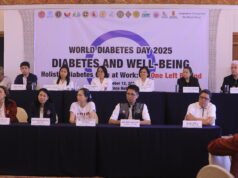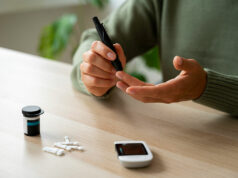Medicine Cabinet
Reiner W. Gloor
I’m sure many of you are wondering about this heat that seems to be getting worse every day. While we can all just attribute this to the El Niño phenomenon that hits our country every few years, it is alarming that the temperatures do seem to be intensifying and experts predict this summer will be one of the hottest yet. It is important for us to remember a few simple things to protect ourselves in this season, especially since I know many of you must have plans to go to our wonderful beaches and resorts.
One of the conditions we really need to watch out for especially with these soaring temperatures is heatstroke. This is marked by fever, and often by unconsciousness, caused by failure of the body’s temperature-regulating mechanism when exposed to excessively high temperatures. Before a heatstroke happens, some signs to watch out for are dizziness, mental confusion, headaches and weakness. However it’s also possible for heatstroke to occur while a person is asleep. In that state, the affected person may sweat excessively. Children may also have seizures. Eventually, all this can lead to unconsciousness, organ failure, and even death.
It is obvious we need to take caution when we are outside, but one often overlooked place heatstroke can happen is inside the car. Adults, children, or even pets left inside parked cars are at a particular risk for this condition. Even if a car window is opened slightly, heatstroke can set in in a matter of minutes and those in the vicinity may not immediately notice what is going on. It is recommended that drivers, parents, and guardians avoid the situation entirely. If one must leave their vehicle, even for just a few minutes, if possible find parking in the shade or indoors.
The risk for heatstroke can be reduced considerably by taking certain precautions in order to avoid overheating and dehydration.
• It is best to wear loose, light colored clothes to allow perspiration to evaporate more quickly and cool the body. Hats are also a good choice when stepping outside, with the wide-brimmed ones providing excellent shade.
• Strenuous exercises and physically taxing activities must be avoided during daylight hours, especially in very hot weather, even in confined spaces that do not have proper air-conditioning or ventilation.
• Hydrating frequently is recommended, as sweating makes us lose fluids. Simple thirst is not a reliable sign that a person needs fluids. Urine is actually a better indicator with a dark yellow color signaling dehydration. Drink fluids often and before you even get thirsty, and avoid beverages containing alcohol or caffeine as these are diuretics.
In case you are in a situation where someone is suffering from heatstroke, treatment will involve rapid cooling along with standard resuscitation measures. The person needs to be transferred to a cooler area, shaded or, better yet, indoors. A cold bath is recommended or cold compresses applied to the torso, head, neck, and groin area to cool the victim. A fan or air-conditioner may be used to aid in this process as well. Hydration is important too through water or isotonic sports drinks, but the amount must be monitored as the condition may be worsened by excess consumption of fluids. In case the person is confused or unable to drink orally, an intravenous drip might be necessary for rehydration and electrolyte replacement.
At that point, trained medical personnel must already be present to assess and stabilize the patient as necessary. The person’s heart rate should be monitored and CPR conducted in case he or she goes into cardiac arrest.
Heatstroke should never be underestimated. Just last month, a female trainee of the police Special Action Force died from the condition while rehearsing for their graduation rites in the parade grounds. Let’s hope no one else is added to this list this year.
For sports enthusiasts who like golf, swimming, and other sports played outdoors, they should never underestimate the damage the sun could also do to their skin. Even those playing for leisure and not staying under the sun for too long could still be exposed to harmful UV rays. It is essential that they get proper sun protection with products offering a minimum of SPF 30 or even SPF 50+. I realize sun care is not necessarily related to heatstroke, however you may avoid one by taking these precautions anyway.
Log on to www.phap.org.ph and www.phapcares.org.ph. E-mail the author at reiner.gloor@gmail.com.




